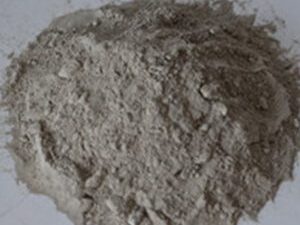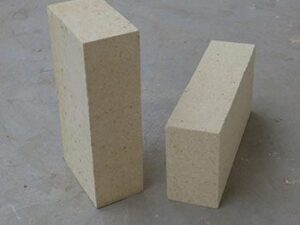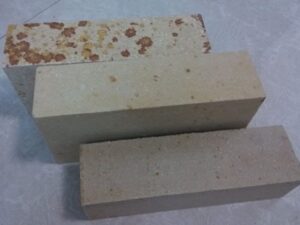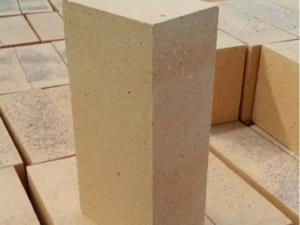Description
Fireclay Bricks: The Reliable Workhorses of High-Temperature Applications
Fireclay bricks, unassuming in appearance, are the workhorses of industries that demand exceptional heat resistance. From the fiery depths of blast furnaces to the cozy interiors of wood-fired ovens, these bricks provide a robust and cost-effective solution for containing and managing extreme temperatures. But what exactly are fireclay bricks, and why are they so widely used?
What are Fireclay Bricks?
Fireclay bricks are refractory materials composed primarily of fireclay, a naturally occurring clay rich in alumina (aluminum oxide) and silica (silicon dioxide). The specific composition and manufacturing process determine the brick’s properties, such as its ability to withstand high temperatures, resist thermal shock, and endure chemical attack.
Composition and Manufacturing:
- Fireclay: The core ingredient, fireclay, varies in quality depending on its origin and mineral content. Higher-quality fireclay contains more alumina and less impurities, leading to superior performance.
- Additives: Small amounts of other materials like grog (pre-fired clay), silica, or alumina may be added to modify the brick’s properties, such as shrinkage, strength, and thermal conductivity.
- Manufacturing Process: The process typically involves crushing and grinding the raw materials, mixing them with water to form a plastic mass, shaping the bricks (either by hand molding, machine molding, or extrusion), drying them to remove moisture, and finally, firing them in high-temperature kilns. The firing process vitrifies the clay, creating a dense and strong ceramic material.
Key Properties and Advantages:
Fireclay bricks offer a range of beneficial properties, making them ideal for high-temperature applications:
- High Refractoriness: They can withstand temperatures exceeding 1600°C (2900°F) without softening or deforming.
- Thermal Shock Resistance: They can endure rapid temperature changes without cracking or spalling.
- Chemical Resistance: They offer good resistance to many acids, alkalis, and molten materials.
- Cost-Effectiveness: Compared to other refractory materials, fireclay bricks are generally more affordable.
- Versatility: They are available in various shapes and sizes, allowing for easy construction and customization.
- Availability: They are widely available and easily sourced, making them a convenient choice.
Applications:
The versatile nature of fireclay bricks leads to their use in a diverse range of applications across various industries:
- Metallurgy: Lining blast furnaces, steel ladles, and other equipment used in metal production.
- Ceramics: Constructing kilns and ovens for firing pottery, tiles, and other ceramic products.
- Glass Manufacturing: Lining furnaces used for melting and shaping glass.
- Cement Production: Lining rotary kilns used in cement manufacturing.
- Power Generation: Lining boilers and combustion chambers in power plants.
- Wood-Fired Ovens: Building and lining wood-fired ovens for cooking pizza, bread, and other foods.
- Fireplaces and Stoves: Lining fireplaces, wood stoves, and other heating appliances.
Types of Fireclay Bricks:
Fireclay bricks can be classified based on their alumina content and other properties:
- Low-Duty Fireclay Bricks: Contain the lowest alumina content and are suitable for less demanding applications.
- Medium-Duty Fireclay Bricks: Offer a balance of refractoriness and cost-effectiveness.
- High-Duty Fireclay Bricks: Contain the highest alumina content and are used in the most demanding applications.
- Super-Duty Fireclay Bricks: Further enhanced properties for extreme environments.
Considerations When Choosing Fireclay Bricks:
Selecting the right fireclay brick for a specific application requires careful consideration of the following factors:
- Operating Temperature: Select a brick with a refractoriness rating that exceeds the maximum operating temperature.
- Thermal Shock: Consider the severity of temperature fluctuations and choose a brick with adequate thermal shock resistance.
- Chemical Environment: Select a brick that is resistant to the specific chemicals present in the application.
- Mechanical Stress: Consider the amount of mechanical stress the brick will be subjected to.
- Size and Shape: Choose bricks that are appropriately sized and shaped for the construction.
In Conclusion:
Fireclay bricks are a testament to the enduring value of simple, yet effective materials. Their ability to withstand extreme heat, resist thermal shock, and endure harsh chemical environments makes them indispensable in a wide range of industries. While newer, more technologically advanced refractory materials exist, fireclay bricks remain a reliable and cost-effective choice for many applications, solidifying their place as the dependable workhorses of high-temperature engineering.











Reviews
There are no reviews yet.